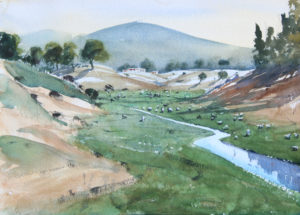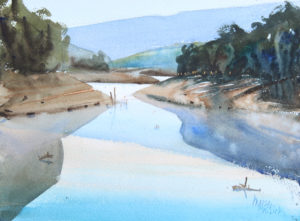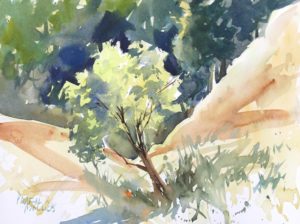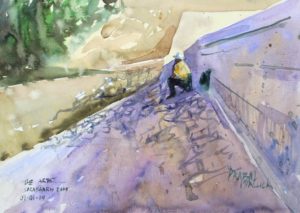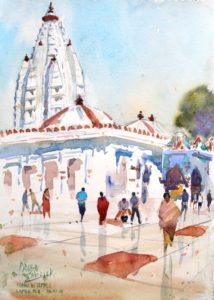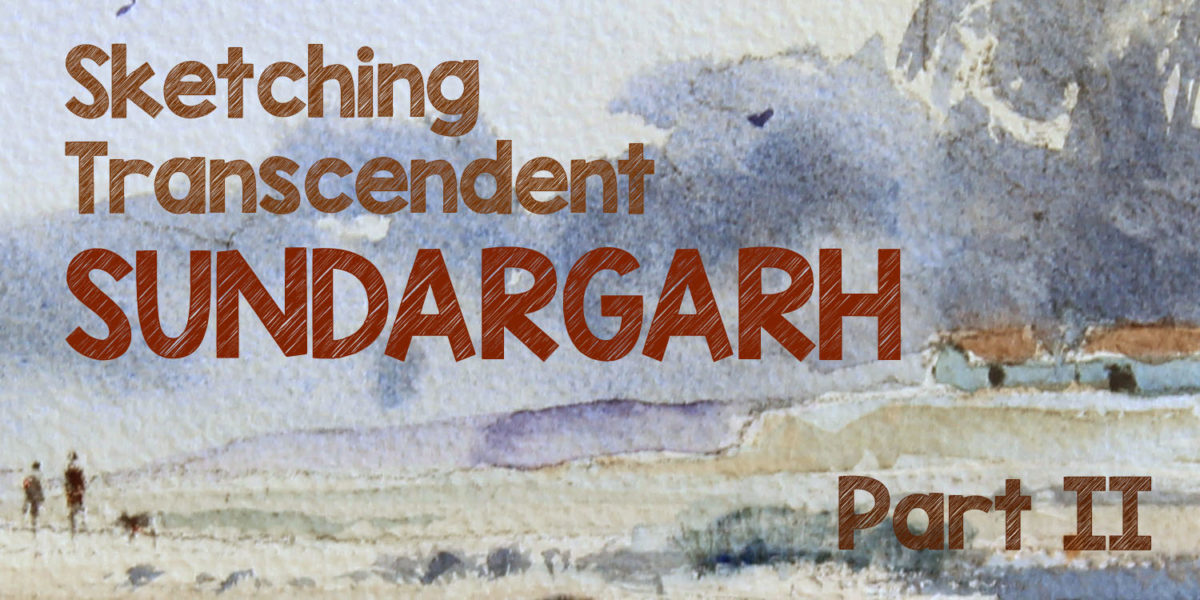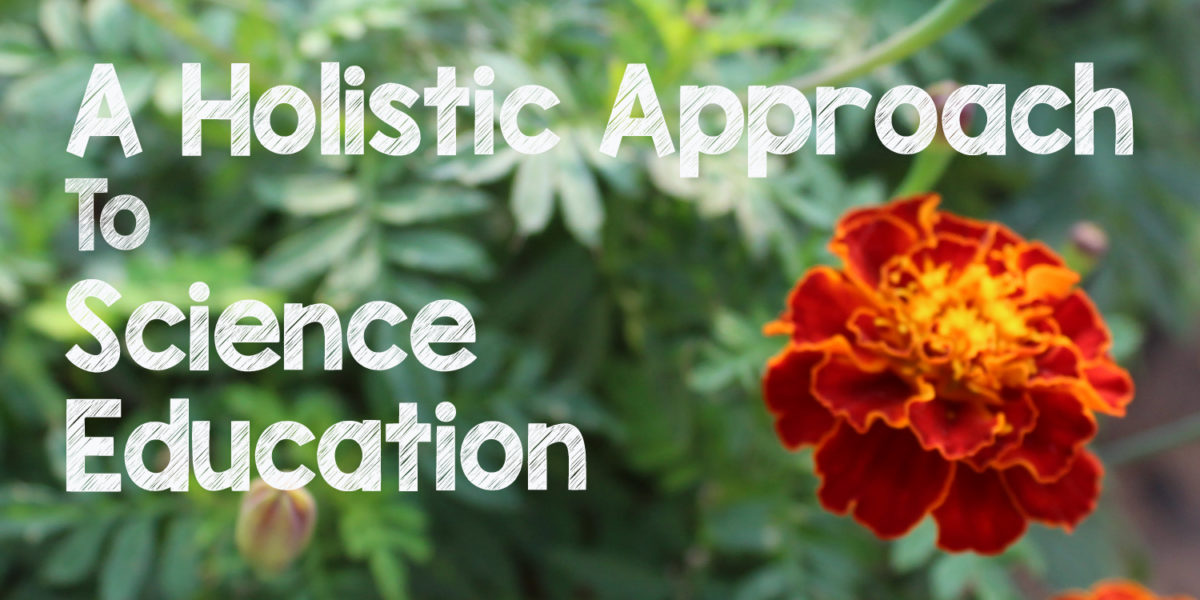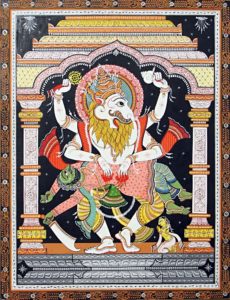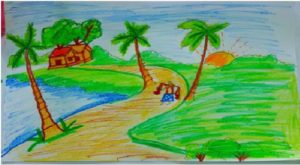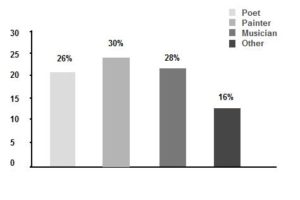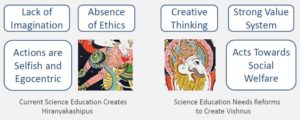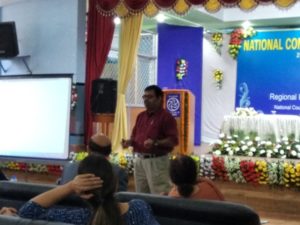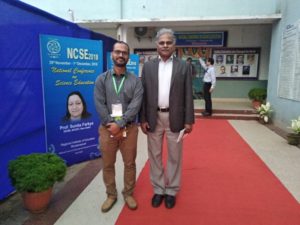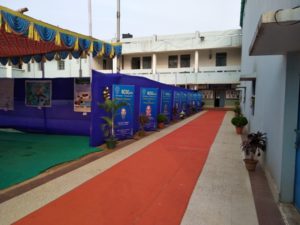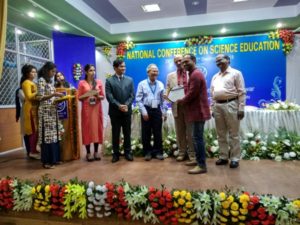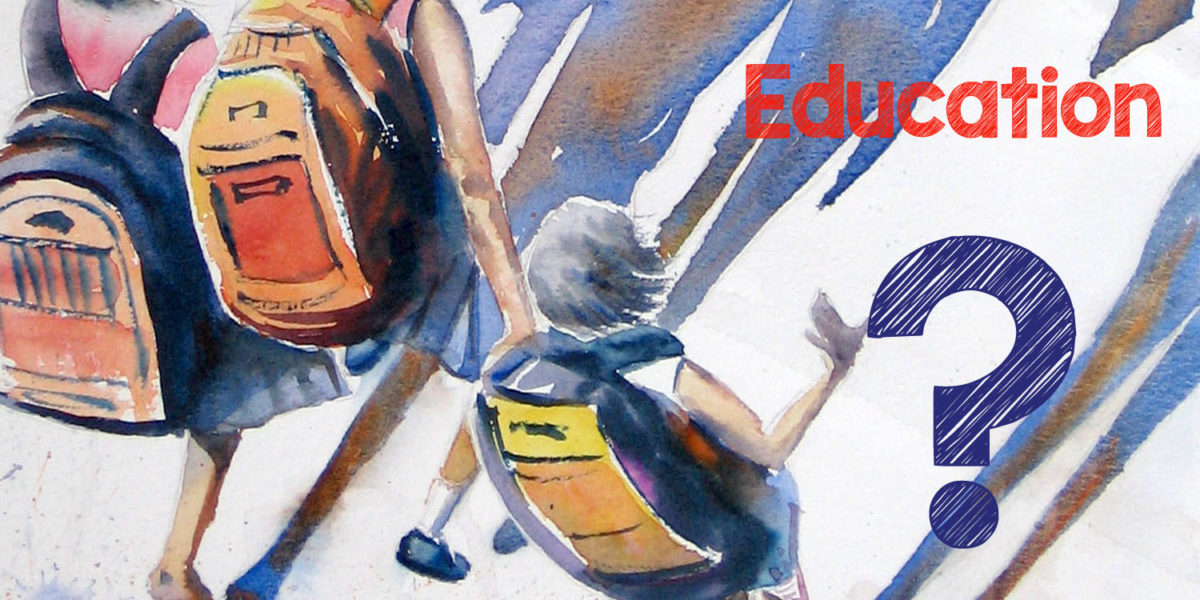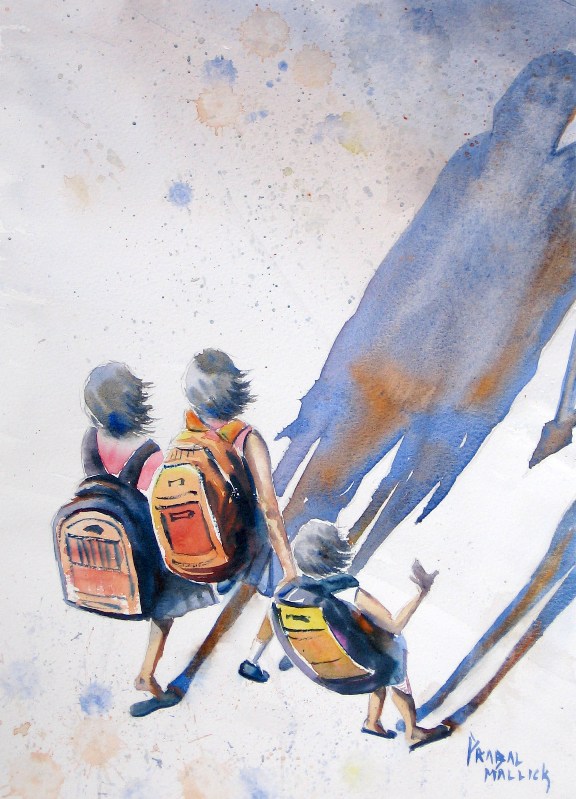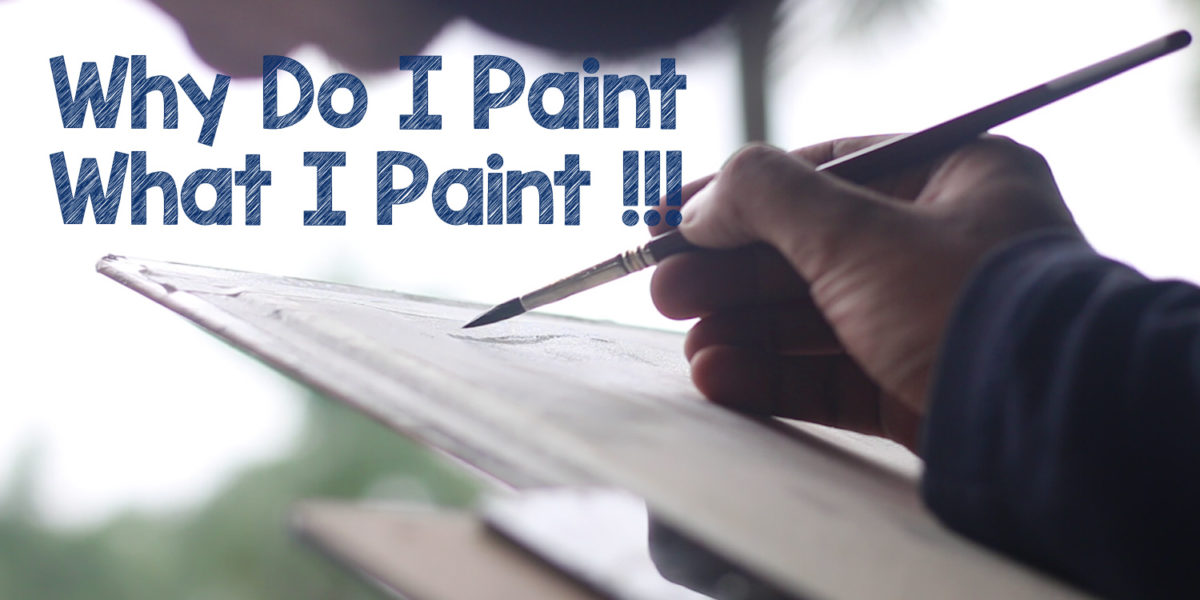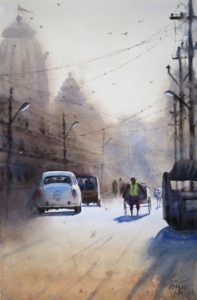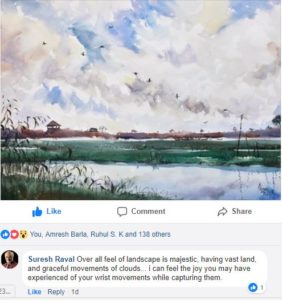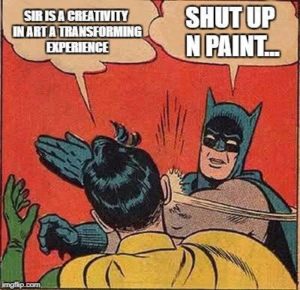Two Days of our Sundargarh sketching trip had gone in a jiffy. The first day it was all about Sundargarh town and the second day the beauty of Tangarmunda, its people and the food had left lasting impression on me. Everything from how the plan changed from Sambalpur to Sundargarh, our journey from Bhubaneswar to Sundargarh and the sketching experience had just been perfect. But the best was yet to come.
Read the first part of Sundargarh Sketching Trip here
Surreal Sarabgarh
09 Jan 2019
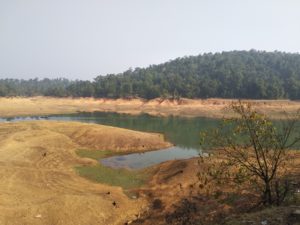
Kedar had planned a grand finale to our Sundargarh Sketching Trip. The destination was Sarabgarh Dam, which is approximately 30 kilometers from Sundargarh town. It was also the second day of the bundh which meant we had to leave the town early in the morning once again. By now we were quite used to the chill of the hard winter and got ready well in time. But our auto guy Ashish did not arrive. He had misplaced the auto keys and just could not find it. Due to bundh getting another vehicle was not going to be easy and almost impossible so early in the morning. But somehow none of us felt flustered. Probably the sequence of events in the past few days had given us a sense of calmness. Somehow we knew things will work out. And then suddenly Ashish arrived in his auto. He had managed to start his auto with the help of some jugaad. Wasting no time we got into the auto and though a little late our journey to Sarabgarh dam finally started. But the challenges were not over yet.
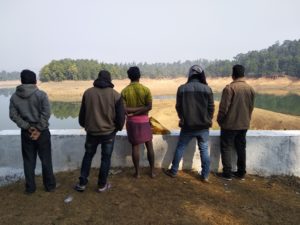
In a few minutes after going out of town, Ashish realized that he was out of gas. Being a day of complete shut down he was not hoping to find any gas station open. But once again we all were at peace and were just not getting worried and asked him to keep moving. And again as if a miracle there was this small gas station in the middle of nowhere waiting for us. Ashish was the happiest one at that point, but his joy lasted only a few seconds when he realized that he did not have the key to open the lock of the gas tank. But the trend for the day continued and a solution presented itself no later than the problem was encountered. One of the gas station staff tried to open the lock with his bike key and yes you guessed it right. The lock opened as if it was the original key. Sometimes reality is actually stranger than fiction.
Only when we reached Sarabgarh dam that we realized why Kedar had planned this as our ultimate sketching destination. This place was a paradise. It was something out of a fairy tale. Sarabgarh was Surreal, quiet and enchanting. As we were soaking up the beauty, Kedar had already started looking for lunch arrangements. We happened to find two villagers passing by and Kedar asked them about eateries in the vicinity. As expected there were none and out of the blue Kedar asked them if they could prepare lunch for us. We had just met these two people in the middle of nowhere for the first time in our lives and Kedar was expecting them to prepare lunch for us! But the biggest divine intervention was just about to happen. The elder of the two instructed the younger man to get lunch prepared at his home. We just could not believe our luck. On top of that, the lone fisherman who had caught some fresh fish from the dam also presented himself to us. It was as if Biswajit’s prayer was answered. He was craving for fish earlier during our journey to Sarabgarh. I wanted to pinch myself to check if I was dreaming. But Sarabgarh was no less than a dream.
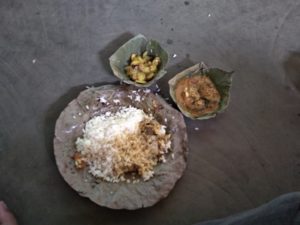
Soon we found a great place to sketch. But problem with beautiful views is that…….. they are beautiful. This beauty can sometimes be overwhelming to the extent that one can easily get carried away by it and not pay attention to some basics of a painting like composition, abstraction and design etc. And somewhere in the middle of the painting when things don’t seem to work out you suddenly realize this and more often than not you feel like a fool. My first work at Sarabgarh dam was all about this struggle. What started in the most enthusiastic ways soon turned out to be a little more than a square foot of confusion and exasperation. But I did carry on and finished the painting. In the end it turned out to be one of the most popular works of the sketching trip; yet another miracle of the day. And for the second work I turned 180 degrees from my place and had this beautifully designed and abstracted scene in front of me. It was crying out to be painted and I obliged. And soon it was time for lunch and as we made way to our vehicle there was good news waiting for us.
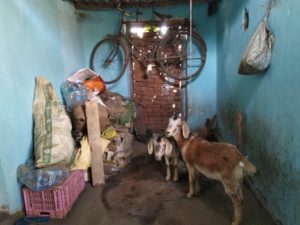
Ashish had found the keys. The keys were there in one of the pockets of his jacket while he had been looking everywhere for it. As our vehicle moved to our lunch destination he looked visibly upbeat and we too, were happy for him. As per our host’s instruction we had to drive up to Masabira village and then all we had to do was to ask anyone where Chuin’s house is. And that is exactly what we did and landed up at our host Chuin aka Guru’s place. Guru was not at home and we were a little hesitant to get inside the house, but Guru’s family welcomed us and served us lunch consisting of Rice, Fish curry and Aloo Bhaja. Sitting on mud floor smeared with cow dung under the thatched roof and having food so lovingly served to us on plates made up of Sal leaves in a person’s house we had met a couple of hours earlier and in a place that seemed to exist in a parallel reality, I could not help but feel a sense of gratitude. The food cooked so simply tasted like nothing I had eaten before, the modest house felt like the most luxurious mansion, the strangers seemed like family. A remote tribal village in Sundargarh, which I had never even heard of, felt like home. Surely this had to be the biggest miracle of the day.
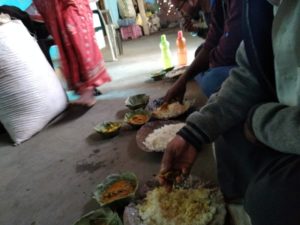
All good things eventually come to an end. We had to start our journey back to Sundargarh town in some time and had about an hour in our hands. So back at Sarabgarh dam I sketched vigorously. I wanted to make most of the time I had at Sarabgarh. I did two sketched at the same time, working intermittently of each of them painting as fast as I could. And then finally it was time to return.
The next morning we had to start our journey back to Bhubaneswar.
A Fitting Closure
10 Jan 2019
The previous night Ashish had made sure to keep his keys at the right place and was there on time to drop us at the bus stop. We caught the first bus to Sambalpur at 6:00 AM which reached its destination at half past eight. On reaching Sambalpur we moved straight to the temple of Samaleswari or Samalai, the residing goddess of western Odisha. Any trip to western Odisha is not complete without a visit to Samali temple. So we had decided to take the morning bus to Sambalpur which would give us about 5 to 6 hours before our train left from Sambalpur station. At the temple premises we took a room at the guest house and got ready for the day.
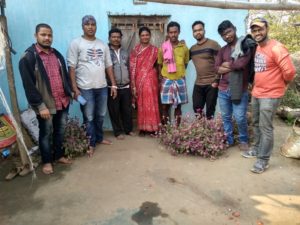
The temple was relatively less crowded and we had a good darshan of the goddess. After the darshan and some hot and delicious breakfast from a street vendor it was time to sketch again. As we settled into different corners of the temple premises for sketching the physical exertion of the last few days was starting to take its toll. My body just wanted to rest. But my mind was getting excited at the prospect of sketching the beautifully play of light and shade of Samali Temple. I somehow forced myself to focus and started sketching. And as the sketch slowly started to develop the physical exertion also went away. As the scene was well lit I was using a lot of primary unbroken colors in the sketch and probably those colors were working their magic on me.
Or may be it was the blessing of the goddess which had been guiding us through the last five days.
Sketching session was followed by delicious temple lunch prasad. And after a short nap it was time to return back.
Sundargarh has been a revelation. It was pitch perfect in everything an artist could ask for. The beauty of nature, the simplicity and warmth of the people, the simple nutritious and mouth watering food and a feel of transcendence in the air; it had everything. But there was even a bigger revelation. It was about the working of nature.
Nature has a rhythm. Sometimes we are lucky enough to get aligned to this rhythm in mind body and spirit. And when this happens everything that a person needs just present themselves to her… at the right time. All one need to do is to have faith in this force and walk on. And what follows is what every person truly wants on this earth.
True Bliss!
